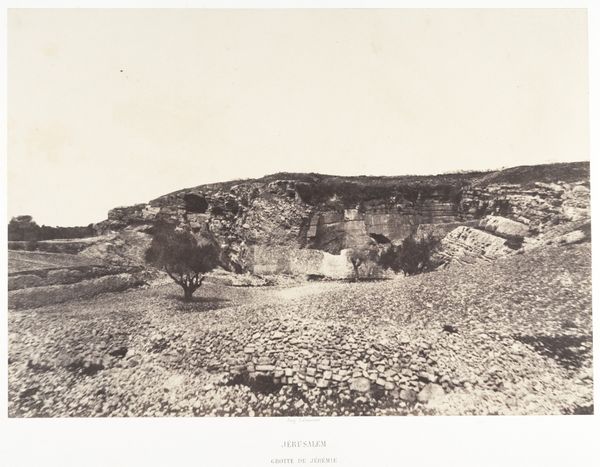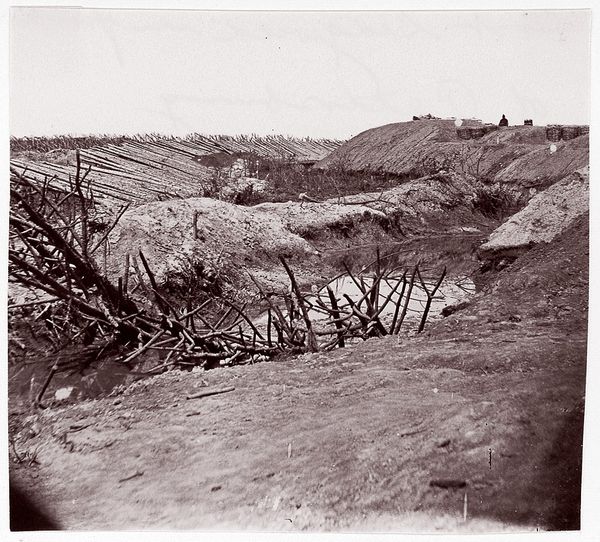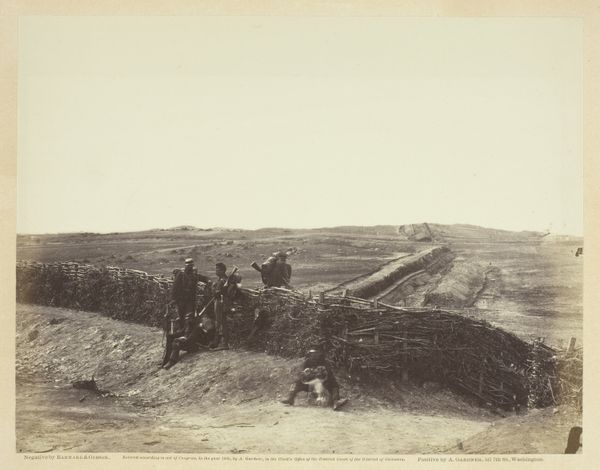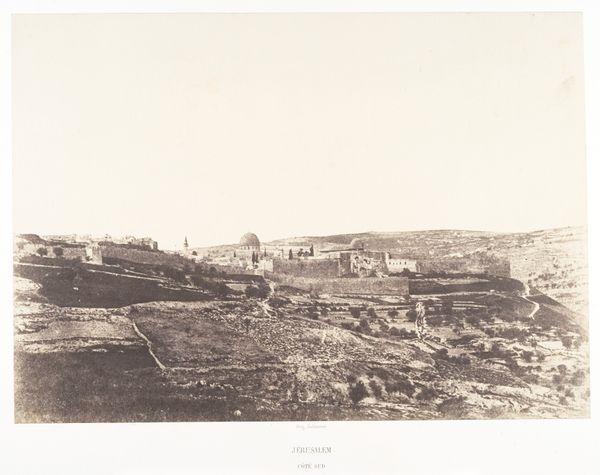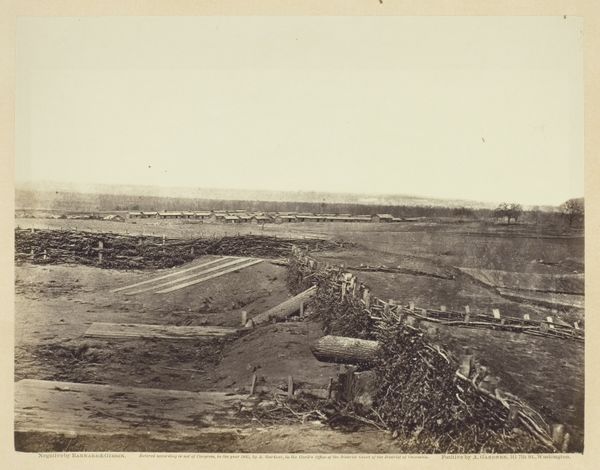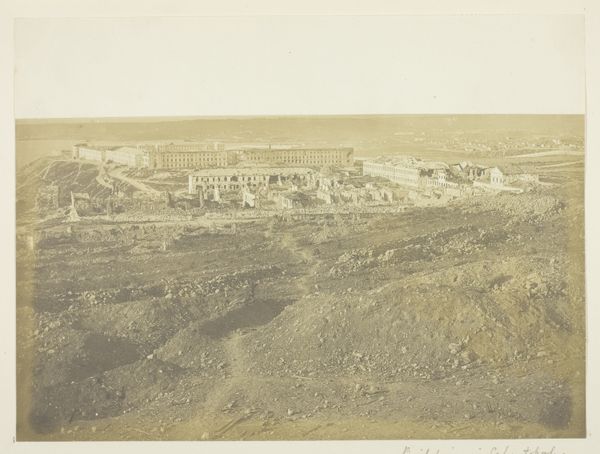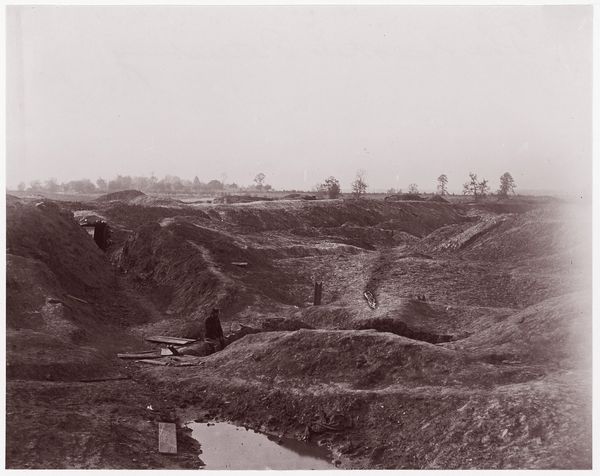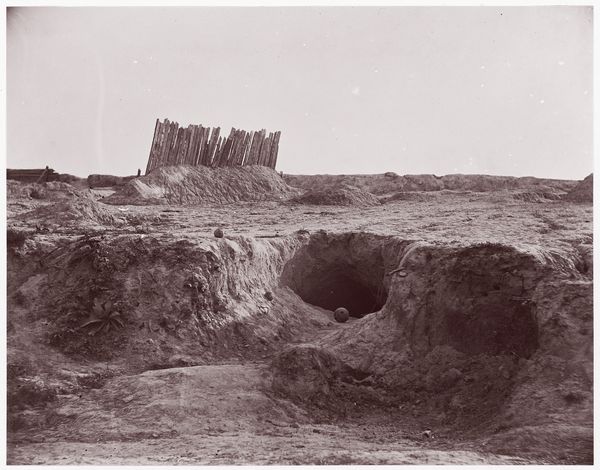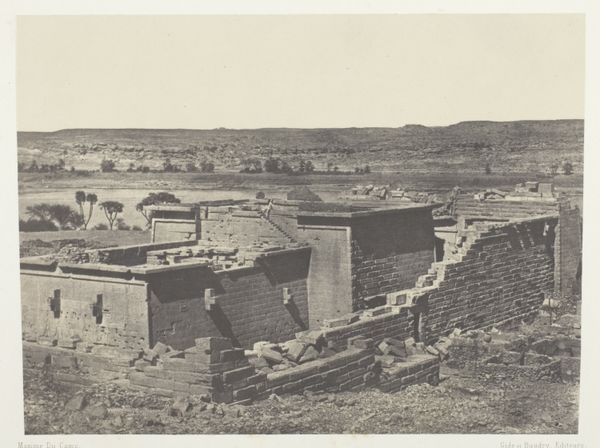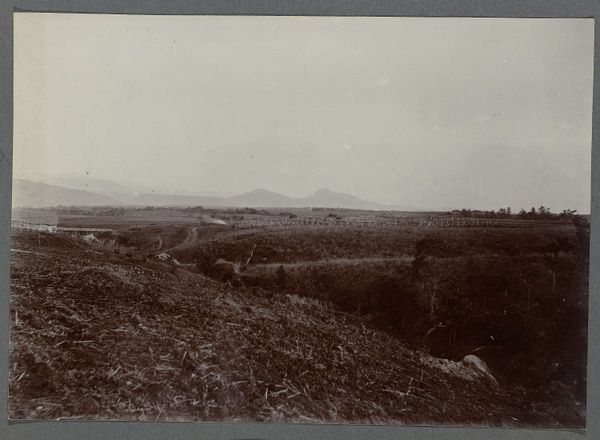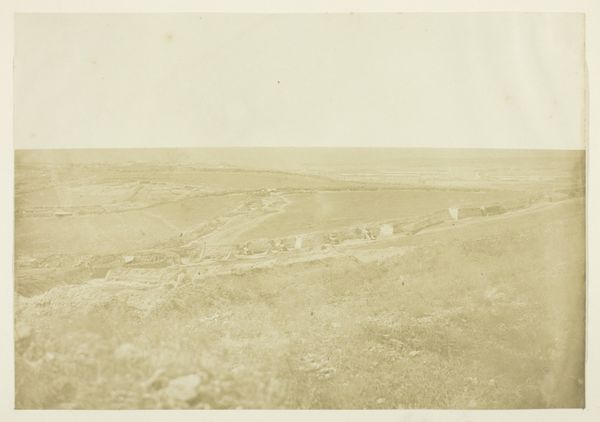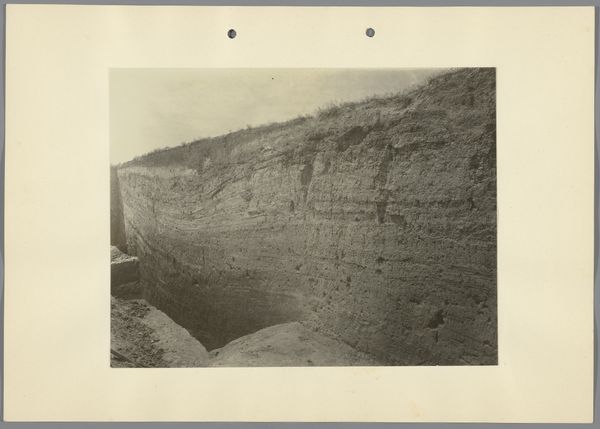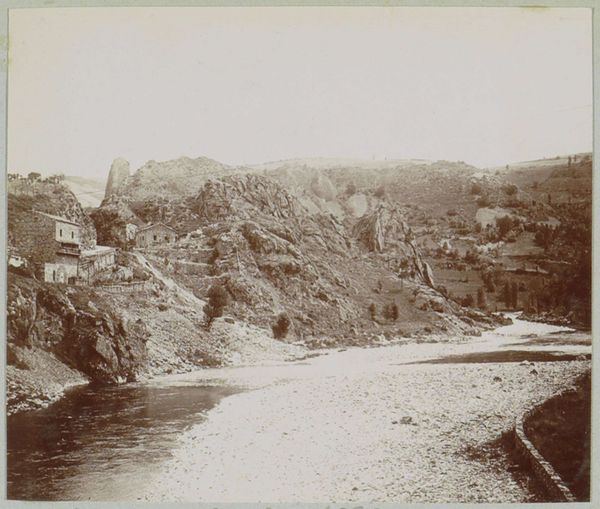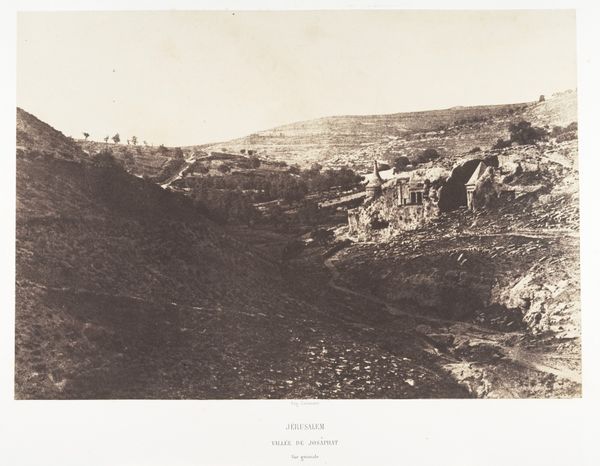
Gezicht op de Grot van Jeremia en het klooster van St. Stefanus bij Jeruzalem c. 1867 - 1895
0:00
0:00
photogram, photography
#
photogram
#
countryside
#
landscape
#
natural light
#
photography
#
orientalism
#
realism
Dimensions: height 281 mm, width 225 mm
Copyright: Rijks Museum: Open Domain
Editor: So, this is "Gezicht op de Grot van Jeremia en het klooster van St. Stefanus bij Jeruzalem" by Maison Bonfils, dating from around 1867 to 1895. It's a photograph, and the scene has this really interesting contrast between the rugged, natural rock face and what appears to be a man-made structure in the distance. What catches your eye when you look at it? Curator: What I see is the visual construction of the “Holy Land” for a European audience. Bonfils, a French photographer working in Beirut, was essentially producing Orientalist imagery catering to a Western fascination with the biblical landscape. Think about the market for such photos. They weren't just landscapes; they were selling access to a symbolic space loaded with religious and historical meaning. Editor: That makes a lot of sense. So the focus on the Cave of Jeremiah isn't just about the natural landscape, it's emphasizing a historical connection? Curator: Exactly! And consider the presence of the monastery. It reinforces the idea of continuous Christian presence, a claim of ownership, in a way, presented to the Western viewer. This isn't just a depiction; it’s a carefully framed narrative. What do you make of the almost documentary style of the photograph? Editor: It almost lends it an air of authenticity, doesn't it? Like "Here is what it really looks like." So the ‘Realism’ tag is really interesting. Curator: Precisely! The realism acts as a form of persuasion. These photographs became powerful tools in shaping perceptions and even justifying political and religious claims on the region. How might viewers from different backgrounds have received this photograph at the time? Editor: That’s a perspective I hadn’t really considered! It’s far more than just a pretty picture, it’s actively constructing a narrative about history and cultural presence. Curator: Indeed, photography played a key role in constructing those narratives and disseminating them widely. Understanding this shifts our understanding of the photograph away from simply documentary and into the realm of cultural politics.
Comments
No comments
Be the first to comment and join the conversation on the ultimate creative platform.
